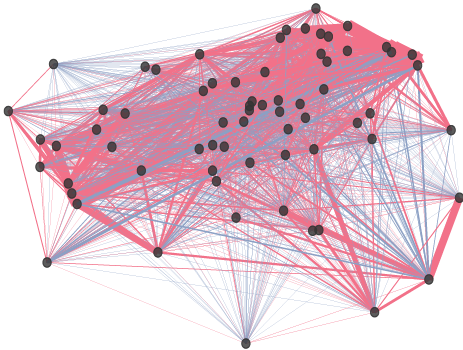Topological analysis of hippocampal CA1 co-firing graphs
Each matrix contains the hippocampal CA1 co-firing graphs computed using the spike trains of pyramidal cells recorded from mice during active exploratory behaviour (i.e., excluding immobility epochs and sharp-wave/ripples) in four different tasks: (i) conditioned place preference (CPP), (ii) exploration of a novel context (without reward), (iii) spontaneous place preference (SPP) for a novel context and (iv) rewarded exploration of an otherwise familiar context (without CPP).
In these co firing graphs, each node represents one cell; the edge linking any two nodes represents the coactivity of that cell pair, with a weight computed as the Pearson correlation coefficient between their spike trains.
Each co-firing graph is defined by its adjacency matrix, whose elements are the edges of the graph / co-firing relationships between pairs of neurons indexed by the rows and columns of the matrix.
For each matrix, the code provided (python 3.6) analyses the co-firing relationships among pyramidal cells for the 6 sessions recorded on that task day. Graph-theoretical measures are obtained for each co-firing graph (one graph per task session) and their dynamics across the 6 task sessions are analysed. See the paper 'Integrating new memories into the hippocampal network activity space' for description of the task and detailed methods. Notably, these example co-firing graphs and codes relate to figures 1, 2 and extended data figure 2.
We welcome researchers wishing to reuse our data to contact the creators of datasets. If you are unfamiliar with analysing the type of data we are sharing, have questions about the acquisition methodology, need additional help understanding a file format, or are interested in collaborating with us, please get in touch via email. Our current members have email addresses on our main site. The corresponding author of an associated publication, or the first or last creator of the dataset are likely to be able to assist, but in case of uncertainty on who to contact, email Ben Micklem, Research Support Manager at the MRC BNDU.

Creative Commons Attribution-ShareAlike 4.0 International (CC BY-SA 4.0)
This is a human-readable summary of (and not a substitute for) the licence.
You are free to:
Share — copy and redistribute the material in any medium or format
Adapt — remix, transform, and build upon the material for any purpose, even commercially.
This licence is acceptable for Free Cultural Works. The licensor cannot revoke these freedoms as long as you follow the license terms. Under the following terms:
Attribution — You must give appropriate credit, provide a link to the license, and indicate if changes were made. You may do so in any reasonable manner, but not in any way that suggests the licensor endorses you or your use.
ShareAlike — If you remix, transform, or build upon the material, you must distribute your contributions under the same licence as the original.
No additional restrictions — You may not apply legal terms or technological measures that legally restrict others from doing anything the licence permits.

